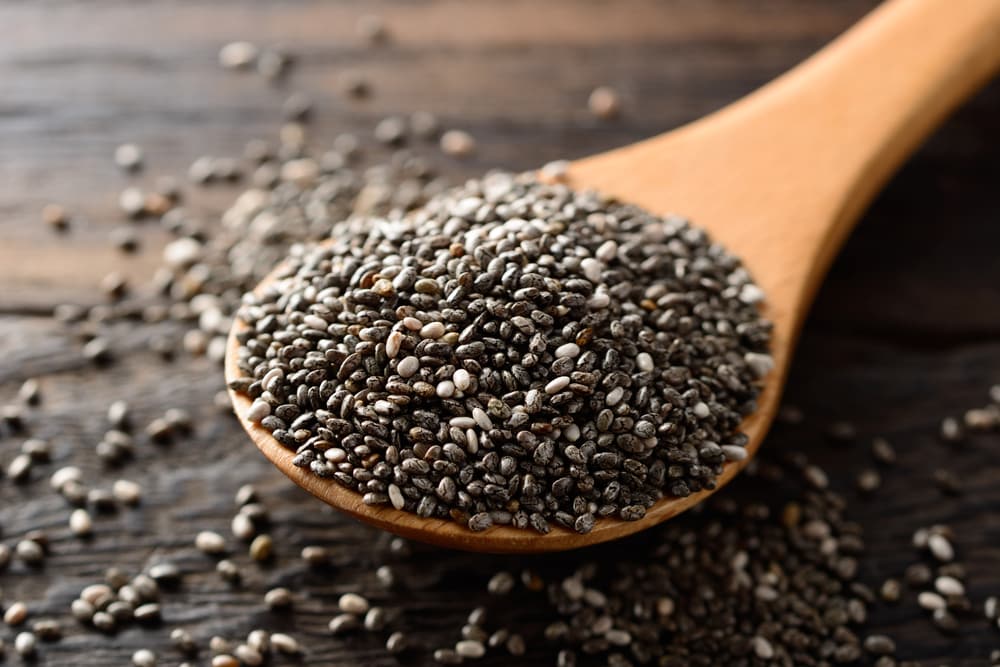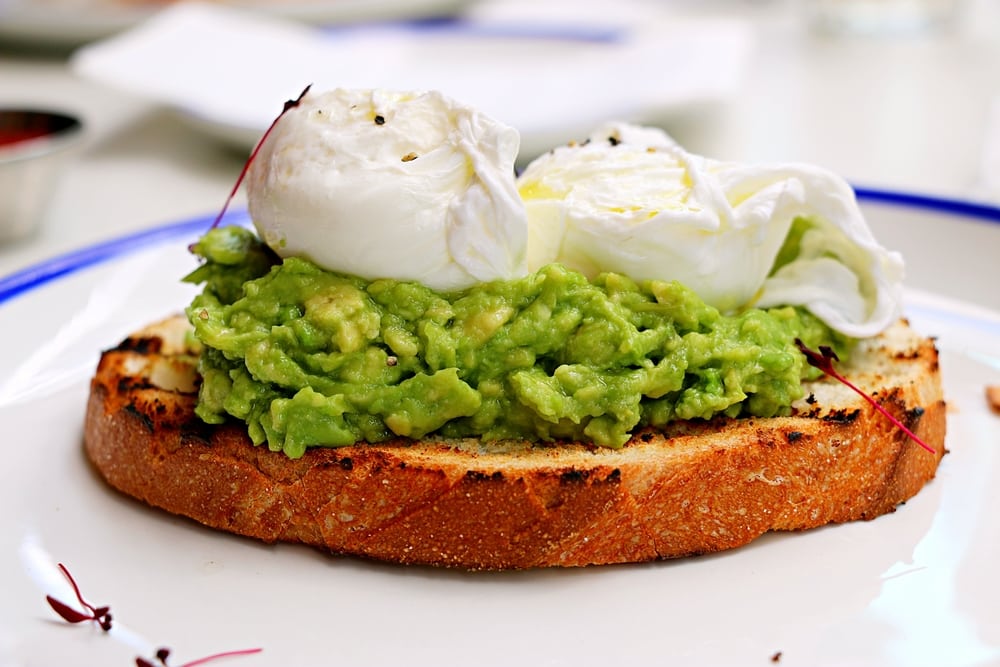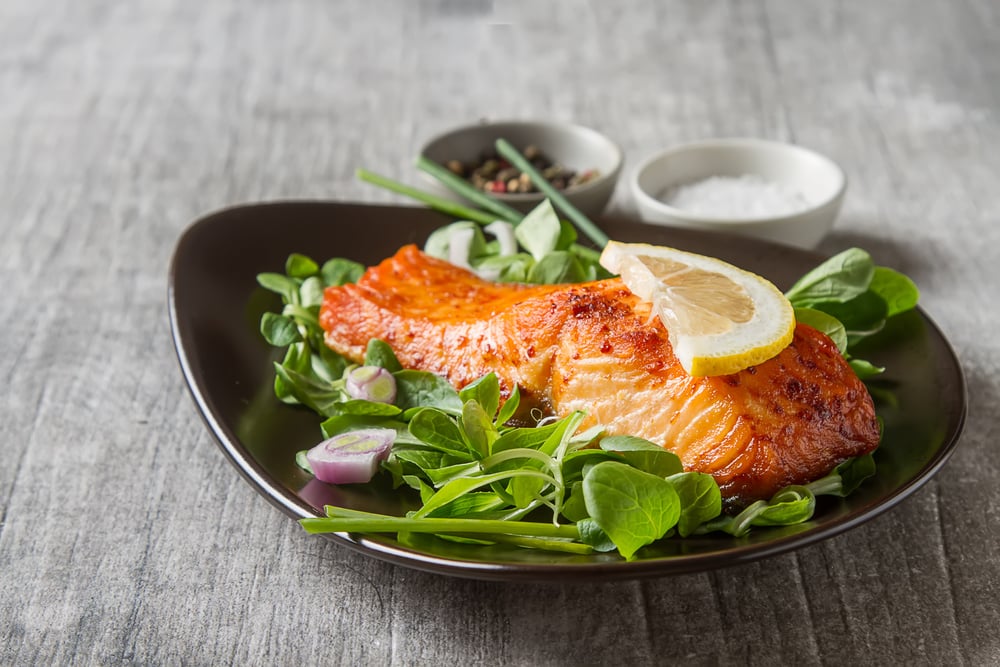Is it true that a diet consisting mostly of cheeseburgers and fried chicken will significantly increase your risk of dying early? Well, technically, yes. While saturated fats aren’t the only reason, they’re a big contributor. Especially if you’re not eating enough healthy fats — found in a variety of foods, like nuts, fish, and plants.
Healthy fats are everywhere, and that’s a good thing. The more fatty foods you eat, the better your health will be. People who follow the Mediterranean diet are often healthier long-term because of its focus on plant-based foods, fish, and healthy oils. In reality, fat isn’t bad for you at all. It’s the type of fat, and how much fat you consume, that matters the most.
So what are the differences between the two main types of fat? What makes healthy fats so healthy, and which foods are the most beneficial sources? Learn all this, plus how to balance your fat intake. Not all fat is bad. A mix of different foods is your best bet at living a long, healthy life. Here is a breakdown of everything you need to know.

The different types of fat
You’ve probably heard plenty of times before not to eat fat, especially something called saturated fat. Are all types of fat as dangerous and bad for your health as people say? There’s a lot of confusion surrounding dietary fat, and a lot of misinformation, too. This is likely because people mostly talk about saturated fat — the “bad” type of fat. They don’t talk quite as much about unsaturated fats — the “good” types of fat.
There are major differences between the different types of fat. One comes from animals, while the other comes from plants. One can raise your blood cholesterol, while the other can lower it. Their properties have different effects on your health. To understand why healthy fats are so good for you, you need to understand why unhealthy fats, well … aren’t.
Saturated fat
This type of fat, called saturated fat, comes from animal sources, coconut, and palm oils. Saturated fat, solid at room temperature, raise total blood cholesterol as well as the amount of “bad” cholesterol, which is why too much can harm your health. As we will discuss later in this article, unsaturated fats can be harmful if eaten regularly in large amounts, but they’re not the sole cause of heart disease.
Unsaturated fats
Unlike saturated fat, unsaturated fats come primarily from plant sources, such as seeds or nuts, and are liquid at room temperature. These fats are either monounsaturated or polyunsaturated, which is what you will often see listed among a food label’s ingredients if they’re present. They lower total blood cholesterol levels, sometimes raising the amount of “good” cholesterol.
There is technically a third type of fat, called trans fat. Thankfully, more and more food manufacturers have begun removing trans fat from their products. The FDA no longer recognizes artificial trans fats as safe for human consumption. Though it can’t hurt to check your food labels just in case, you won’t find harmful trans fats in most of your go-to foods.

Benefits of healthy fats
The differences between the different types of fat aren’t as simple as: “Saturated fat is bad, unsaturated fat is good. Eat less fat and you’ll be fine.” You can’t just stop eating fat altogether and expect to be able to maintain your health for very long. Your body needs fat for energy, for metabolism, for keeping you alive. It’s not just about eating less saturated fat. You also have to eat more unsaturated fat, to take advantage of all its many health benefits.
Increased HDL “good” cholesterol
High-density lipoproteins, or HDL, has a very specific job inside your body. You have two types of cholesterol in your blood, LDL and HDL. LDLs, if there are too many of them, can cause heart problems. That’s where HDL comes in. Think of HDLs as microscopic garbage trucks. They find excess LDLs in your blood, pick them up, and carry them to your liver for disposal. Therefore, HDLs lower the amount of potentially harmful LDLs in your system, lowering your cholesterol. And what’s the benefit of that, you might ask?
Decreased heart disease risk
Excess LDL cholesterol in your blood — and not enough HDL — can lead to plaque buildup in your arteries. This, of course, can cause heart disease, heart attack, and stroke in some people. Your heart depends on your arteries to be able to pump blood easily throughout your body. When your arteries are coated in plaque, your heart has to work harder to get its job done. This stresses and tires it out, which might even eventually cause it to fail completely.
Improved blood sugar control
Foods high in unsaturated fats aren’t just good for your heart. Mayo Clinic suggests a diet that includes healthy fats might reduce your type 2 diabetes risk. This may in part be because many foods containing healthy fats are also often high in fiber, which can prevent your blood sugar from spiking. Processed foods, often high in saturated fats, often contain sugars that cause blood sugar spikes and crashes. Eating more foods with healthy fats in them, few of which are processed, is better for your blood sugar, and lowering your diabetes risk.

Best sources of healthy fats
You likely already know the most prominent sources of saturated fats. Red meat, fried foods, and foods that come in bright, colorful packages are usually the food industry’s worst offenders. It’s easy to say you’re going to try to avoid those and go about your life as usual. What you probably didn’t know, though, is that many of the foods you’re already familiar with already contain healthy fats.
You know the benefits of healthy fats, and why it is important to do all you can to incorporate more of them into your diet. So here are some of the foods that are most commonly associated with higher amounts of healthy fats — plus their additional health benefits.
Nuts and seeds
With each handful of nuts and/or seeds comes a healthy dose of fiber, protein, and of course, healthy fats. Fiber and protein both play similar roles in your body — helping you feel full before you have the chance to overeat. Fiber is a slow-digesting carbohydrate, which just means the sugar releases more slowly into your blood, giving you more long-lasting energy. Protein has an effect on certain hormones, which regulate your satiety (feelings of fullness). Protein, of course, is also an essential source of energy, and also helps athletes repair and build muscle after working out.
Dark chocolate
Dark chocolate provides a healthy source of healthy fats in small amounts. It is also packed with antioxidants, fiber, and flavanols, which can raise the level of good cholesterol in your blood. Dark chocolate will also give you antioxidants. Antioxidants can protect your body from the oxidative stress that comes with aging.
Fish
Fish are some of the best sources of healthy fats, omega-3 fatty acids in particular, you can find. Wild salmon and tuna are especially good choices. Tuna in particular is good for your heart in a number of ways, helping to lower your blood pressure and reducing the amount of bad cholesterol in your blood.
Eggs
While it’s true that eggs contain cholesterol, the cholesterol in your diet doesn’t always raise your blood cholesterol. So you don’t need to worry about eggs hurting your heart. In fact, you should eat more of them. They are packed with a variety of nutrients, like protein. Eating the whole egg, not just the egg whites, provides the most possible benefits to your overall health.
Avocados
At this point, avocados are widely known for their healthy fat. But that isn’t all they’re good for. Avocados actually have more potassium per serving than bananas do. They’re also high in fiber and rich in antioxidants. Avocados are very versatile. You can eat them on your own, use them in baking, put them on toast — wherever you want to add a little healthy fat to your meal or snack.
Cheese
Cheese contains both saturated and unsaturated fats. It is also an excellent source of calcium and protein. Note that we’re talking about fresh cheese, here. Those individual slices of cheese that come in plastic packaging are made with “cheese product” — which sounds suspiciously like something that isn’t actually cheese. Stick with the real stuff for “real” health benefits.

How to find balance in your fat intake
Fewer people embrace low-fat diets and dismissing all fatty foods nowadays. Experts and consumers alike are recognizing that a healthy mix of different types of fat, along with plenty of protein, fiber, and complex carbohydrates, are all part of a healthy diet. As with any type of food, as long as you control your intake, fatty foods are not your enemy.
The key to optimal health is to eat a variety of foods — as many plant-based products as possible, ideally. Many fresh foods contain both saturated and unsaturated fat, plus a vast array of vitamins and minerals. Cutting out a certain food group or type of food is almost never the answer. You’re allowed to eat the foods you like, but you do need to have a good handle on how much of any type of food you eat.
How much fat do you really need in your diet?
If too much fat is bad, then how do you know if you’re on the rick track? Health experts tend to divide macronutrients, or “macros” (carbohydrates, protein, and fat) into daily calorie percentages. Ideally, about 20 to 30 percent of your calories should come from fat. Only about 10 percent or less of that should come from saturated fat. This should balance out with 40 to 50 percent of your calories coming from carbohydrates, and 20 to 30 percent coming from protein. Try to stick to a general rule that no more than 30 percent of your calories per day should come from fat, and you should be in good shape. As long as you fill your body with quality calories and exercise 150 minutes or more per week, that is!

The war on saturated fats
Scientists are always doing research. Sometimes, new research proves some facts are actually fiction. This is the case with saturated fats. While it’s true that eating a lot of saturated fat is still terrible for you, it’s much more important — and effective — to focus on replacing some of the saturated fat in your diet with unsaturated fat, instead of trying to avoid it altogether.
Many people, unfortunately, still wrongfully believe all saturated fats are “bad.” Though it’s based on fact — many unhealthy processed foods also contain saturated fats — many saturated fat-containing foods are still healthy. Cheese, for example, is an animal product — it naturally has saturated fat in it. But you shouldn’t immediately cross cheese off your grocery list for good. Cheese is also high in protein, contains unsaturated fats, and is loaded with vitamins and minerals. Unless you’re lactose intolerant, there’s no reason to give up a product like cheese just because it has fat in it.
You don’t need to cut saturated fats completely out of your diet if you want to eat healthy. The most recent update to the Dietary Guidelines for Americans recommends, however, that you keep your saturated fat intake below 10 percent of your daily calories. This does mean you’ll have to cut back and probably eat fewer processed foods. But it’s worth the many benefits to your long-term health.
Nutrition, overall, is a mix of eating a variety of foods. Some of those foods might naturally contain nutrients that, in massive amounts, can hurt you. That’s why eating more of the stuff that’s good for you, and way less of the bad, is better than not bothering to try the good stuff at all.
If you’re concerned about keeping your heart healthy, don’t just focus on cutting out fat altogether. Make sure you are eating plenty of healthy fats. They’re good for you — and you will find them in many of the foods you already know and love.


